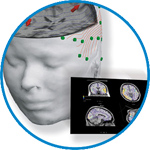- Home
- About ANT
-
Products

asa
asa is a highly flexible EEG/ERP and MEG analysis package with a variety of source reconstruction, signal analysis and MRI processing features.
.jpg)
eego mylab
The new frontier in multimodal brain research. With up to 16 kHz sampling rate, 256 EEG channels and unique software features, eego mylab gives you an unprecedented in-depth understanding of the human brain.

eego sports
eego sports offers complete freedom to collect high-density EEG data, bipolar EMG signals, and a variety of physiological sensor data, wherever and whenever required, with publish quality data in less than 15 minutes!

waveguard net
The waveguard net sets a new standard for research applications requiring high-density EEG data acquisition with quick preparation time, high flexibility, and subject comfort.

visor2
Our new and upgraded visor2 solutions integrate all the latest technologies for navigated rTMS, dual-coil navigation support, EEG-TMS recordings and pre-surgical evaluation for the highest quality in research and clinical procedures.

powerMAG ANT
The PowerMAG ANT 100 rTMS stimulator is designed for the specific needs of high-end TMS applications. Powerful high-frequency TMS as well as high precise single pulse and repetitive pulse protocols are combined in one single device.

xensor
xensor offers the solution for digitization of 3D electrode positions. xensor takes care of the whole procedure; it records, visualizes and stores positions acquired with a dedicated digitizer.

waveguard original
waveguard original is the cap solution for EEG measurements compatible with fMRI, MEG and TMS system. Use of active shielding guarantees performance in even the most demanding environments.

waveguard connect
waveguard connect EEG caps are a perfect match for hospitals and institutes aiming at reliable EEG, maximum uptime and great patient comfort! For optimal signal quality, the electrodes are made of pure, solid tin.

waveguard touch
waveguard touch is a dry electrode EEG cap. The unique Ag/AgCl coated soft polymer electrodes provide stable, research-grade EEG signals while maintaining subject comfort. The combination of these innovative dry electrodes and the industry-leading waveguard cap makes waveguard touch the best solution for dry EEG.

smartmove
smartmove allows planning of a complete TMS session ahead by defining stimulation sites based on anatomical MRI information and functional information like fMRI, PET or EEG/MEG.
Stay - References
- Support
- Events
- News
- Contact Us
You are here
Assessment of mental workload: A new electrophysiological method based on intra-block averaging of ERP amplitudes
Assessment of mental workload: A new electrophysiological method based on intra-block averaging of ERP amplitudes
The present study contributes to the current debate about electrophysiological measurements of mental workload. Specifically, the allocation of attentional resources during different complexity levels of tasks and its changes over time are of great interest. Therefore, we investigated mental workload using tasks varying in difficulty during an auditory oddball target paradigm. For data analysis, we applied a novel method to compute event-related potentials (ERPs) by intra-block epoch averaging of P2, P3a and P3b amplitude components for the infrequent target stimuli. We obtained eight consecutive blocks of 5 epochs each, which allowed us to develop an electrophysiological parameter to measure mental workload. In both the easy and the more constraining tasks, the amplitude of P2 decreased beginning with the second block of the sequence. In contrast, the amplitudes of P3a and P3b components linearly decreased following the repetition of the target in the more constraining task, but not in the easy task. Statistical analysis revealed intra-block differences on amplitudes of ERPs of interest between the easy and the more constraining tasks, confirming this method as a measure to assess mental workload. Since a subject is his own control, the present method represents an electrophysiological parameter for individual measurement of mental workload and may therefore be applicable in clinical routine.

 Read more
Read more.jpg)




